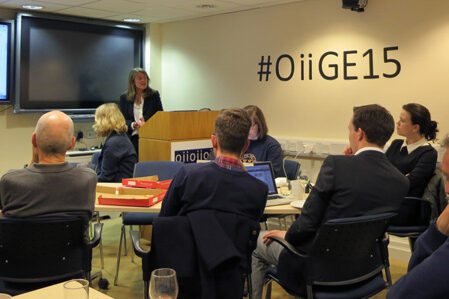Tag: big data
News
- Articles from Policy & Internet
- Books
- Call for Papers
- Child Safety
- Collective Action
- Conferences
- Democracy
- Development
- Economics
- Education
- Environment
- Ethics
- Governance & Security
- Health
- Interviews
- Mapping
- Methods
- Policy
- Politics & Government
- Publications
- Social Data Science
- Submissions Closed
- Tools
- Video
- Wellbeing
-

What are the barriers to big data analytics in local government?
Examining the extent to which local governments in the UK are using intelligence from big…
-

New Voluntary Code: Guidance for Sharing Data Between Organisations
For data sharing between organisations to be straight forward, there needs to a common understanding…









